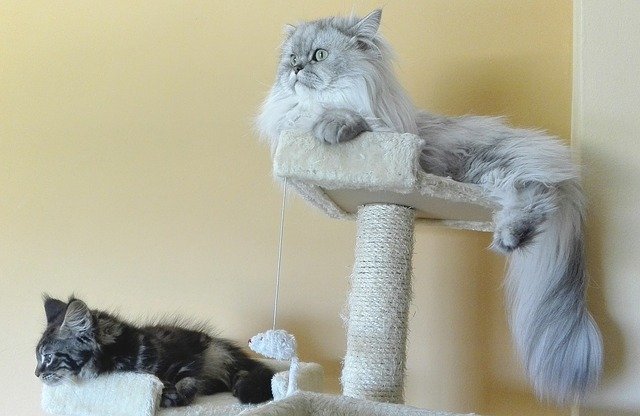
To Declaw Or Not Declaw is a Very Important Question
Declawing your cat can seem like an easy solution to problems like scratched furniture. But, it’s a procedure that can be detrimental to your cat’s physical and mental well-being. The decision to declaw should only be followed through after very serious consideration.
What Happens When a Cat Gets Declawed?
The medical name for declawing is onychectomy. The goal of this elective surgery is to prevent a cat from scratching which could lead to the destruction of property or injury to pets or people. To accomplish this, the surgeon amputates the last segment of the cat’s toe, preventing the animal from regrowing its claws.
This is typically performed on all of the front toes, though in some cases also includes the back toes. The method of removal can be via a scalpel blade, sterilized nail trimmers, or a surgical laser.
Evidence Against Declawing
Declawing has always been a controversial issue. Opponents of declawing consider it unnecessary, excessively painful, and leaving the potential for long-term complications. Studies do support these feelings to some extent. In a 2017 study, it was found that 63% of declawed cats retained painful fragments of their amputated toe.
The study also found that declawed cats had higher rates of back pain, inappropriate urination or defecation outside of the litter box, and increased aggression. It is thought all these conditions trace back to phantom pain in these toes.
What the Experts Say
The American Association of Feline Practitioners (AAFP) recently updated their position statement to “strongly oppose” declawing as an elective procedure, and feel it is an obligation for veterinarians to provide alternatives to this surgery. Legislation has been introduced in states such as New York to ban declawing and it has already been banned in numerous other countries.
Alternatives to Declawing Your Cat:
Regular Nail Trimming
Trimming your cat’s nails can reduce the amount of damage done to the household. It is ideal to begin trimming your cat’s nails as a kitten so they are trained to tolerate the procedure. This can be done at home or at the veterinary hospital.
Scratching Posts
Scratching posts and furniture are the best way to allow your cat to engage in normal scratching behavior. These come in a variety of sizes and textures, so it is best to experiment with different types to see what your cat prefers. The placement of the posts is also important. The best locations are near where they sleep, or close to the undesirable location where your cat is currently scratching.
Temporary Nail Caps
These caps can be glued over your cat’s nails to minimize damage to the home.They typically last 4-6 weeks, though duration can vary.
Environmental Enrichment
Excessive scratching can sometimes be an indicator that your cat’s environmental needs aren’t being met. Consider enrichment such as toys or vertical jumping surfaces.
Feline Pheromone Products
Products such as Feliway mimic the normal pheromones a cat will emit through interaction with their environment. Spraying Feliway on the furniture where undesirable scratching is occurring can reduce this behavior. There is also a related product called Feliscratch that should be applied to the desired scratching locations. A combination of both these products can be used to train your cat to scratch in the right places.
If you have any questions about declawing or have interest in any alternatives, please contact us to speak to one of our veterinarians.
Essex Middle River Veterinary Center provides medical and surgical care for cats and dogs at our animal hospital and veterinary clinic in Essex, Maryland, just outside of Baltimore. Our services include preventive wellness care exams, vaccines, spays/neuters, and a variety of specialized care. Our state-of-the-art veterinary offices are conveniently located near I-695 where we see pets from Towson, Honeygo, White Marsh, and other neighboring Baltimore areas.
